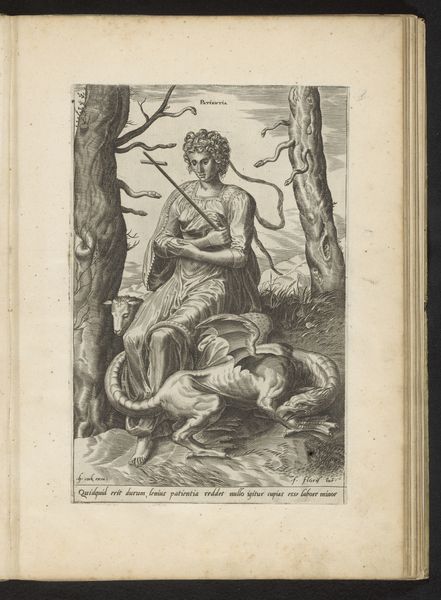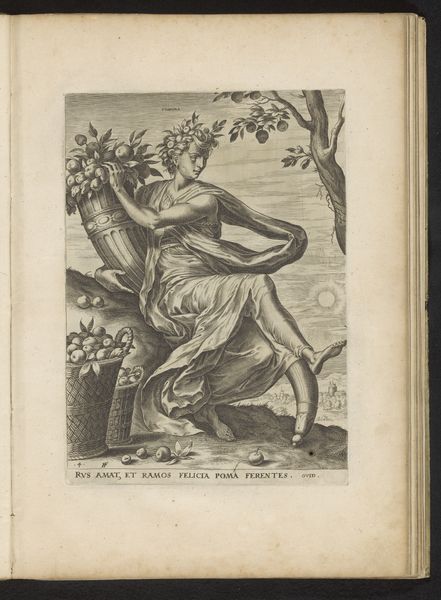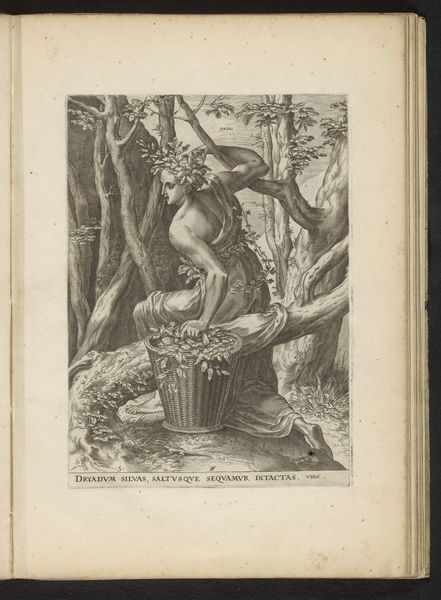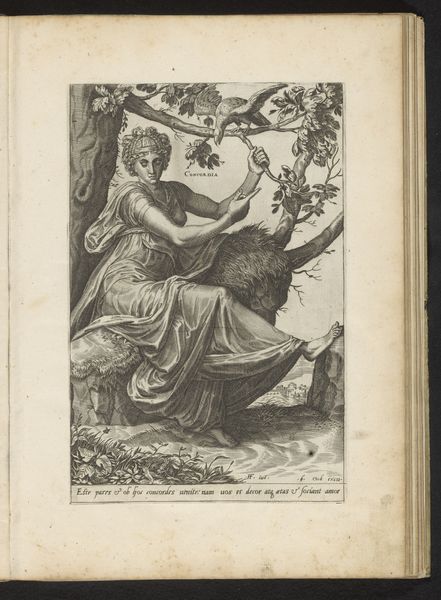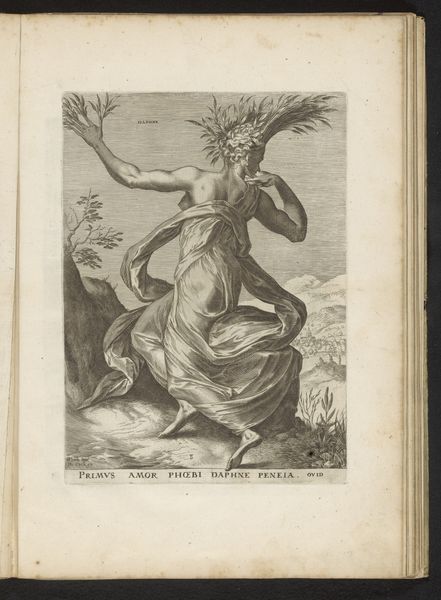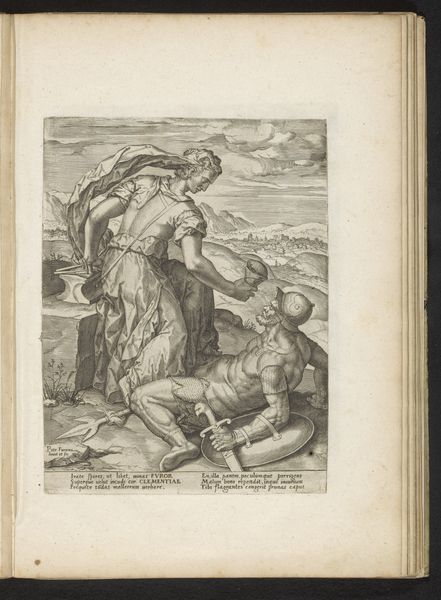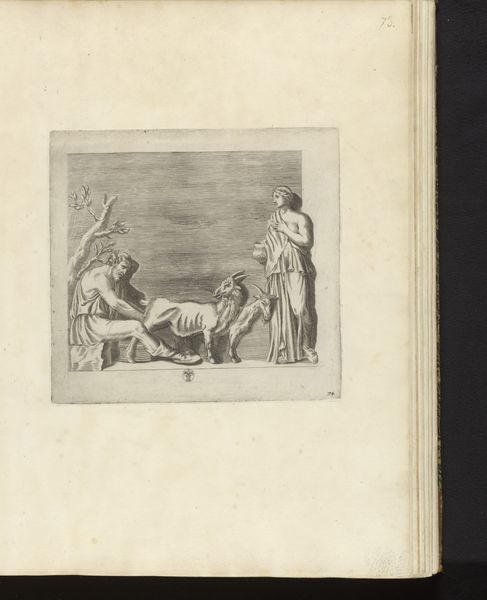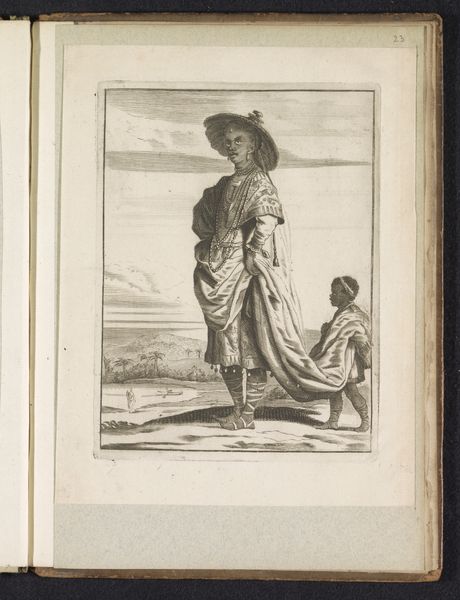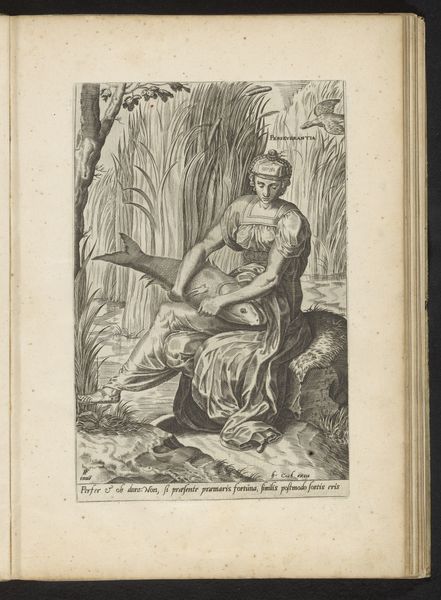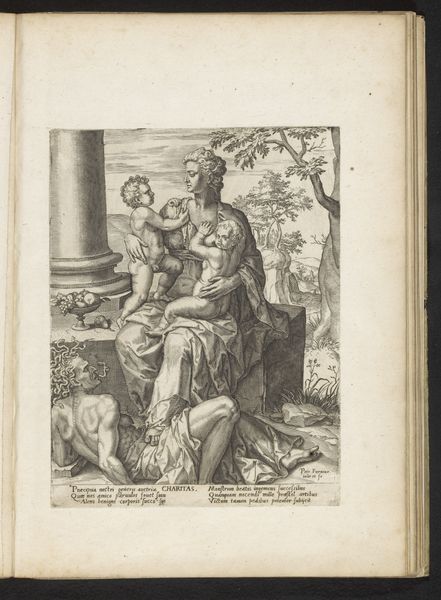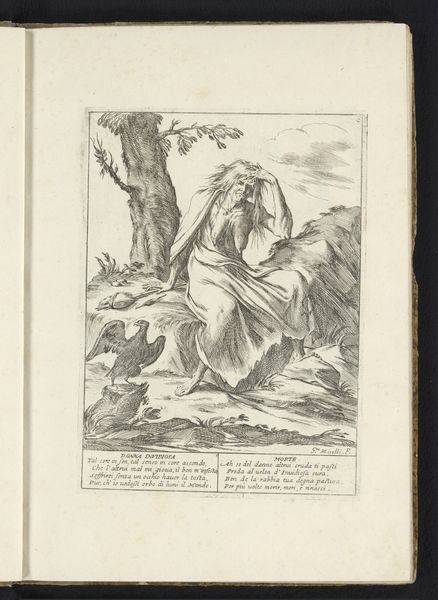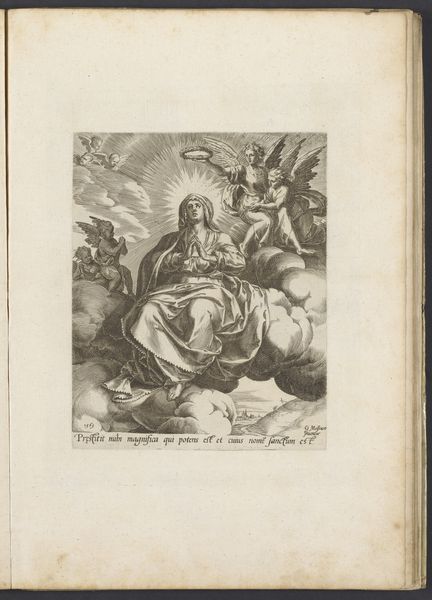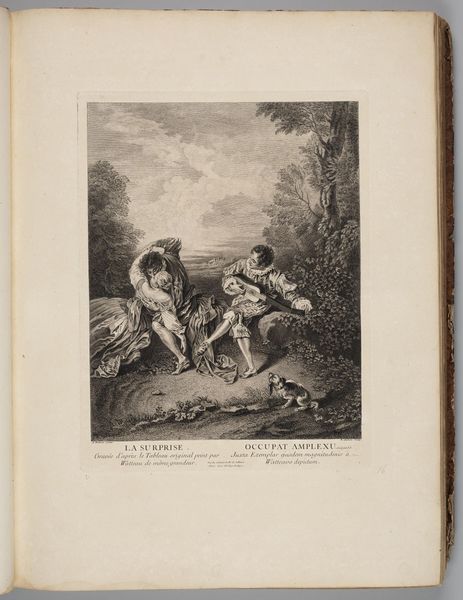
print, engraving
#
allegory
# print
#
landscape
#
mannerism
#
figuration
#
northern-renaissance
#
engraving
Dimensions: height 266 mm, width 192 mm
Copyright: Rijks Museum: Open Domain
Cornelis Cort made this engraving of Ceres, the Roman goddess of agriculture, sometime in the 16th century. Its visual language reflects the social conditions of its time. The image invokes the concept of abundance through the figure of Ceres, who is adorned with wheat. In her hand, she holds a sickle. She sits in front of a field ready for harvest with the image of a church in the far distance. The landscape is fertile but also ordered and controlled. Cort made this print in the Netherlands, a region undergoing significant social and economic change in the 16th century. As cities grew, so did the need to feed the population, to organise agriculture efficiently, and to develop the technologies that would make this possible. Prints were particularly important in the Northern Renaissance, and through their circulation, images such as these provided a model for a prosperous and well-ordered society. By studying prints like this one, we can investigate how the visual arts helped to consolidate new social norms.
Comments
No comments
Be the first to comment and join the conversation on the ultimate creative platform.

